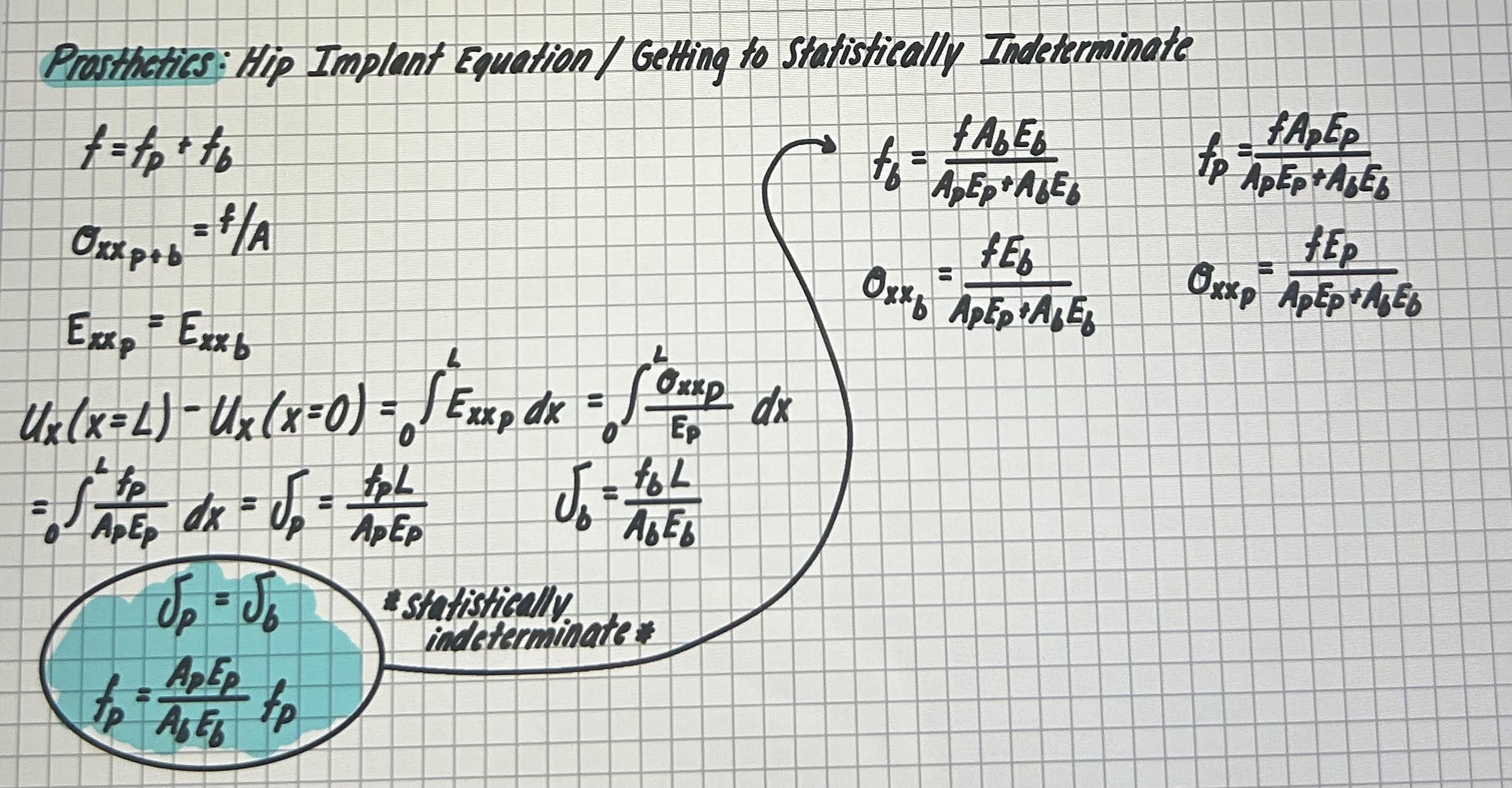biomechanics final
1/34
There's no tags or description
Looks like no tags are added yet.
Name | Mastery | Learn | Test | Matching | Spaced |
|---|
No study sessions yet.
35 Terms
isotropic
materials that have UNIFORM properties in ALL directions
isotropic: stress and strain dimensions
3D
isotropic: stress/strain units
stress (Pa), strain (dimensionless)
orthotropic
materials that have DIFFERENT properties in 3 mutually perpendicular directions
orthotropic: stress and strain dimensions
3D
orthotropic: stress/strain units
stress (Pa), strain (dimensionless)
Vector Algebra: solve for magnitude of P1 + P2
P1 = (3i + 3j - 5k) P2 = (-2i + 3j + 10k)
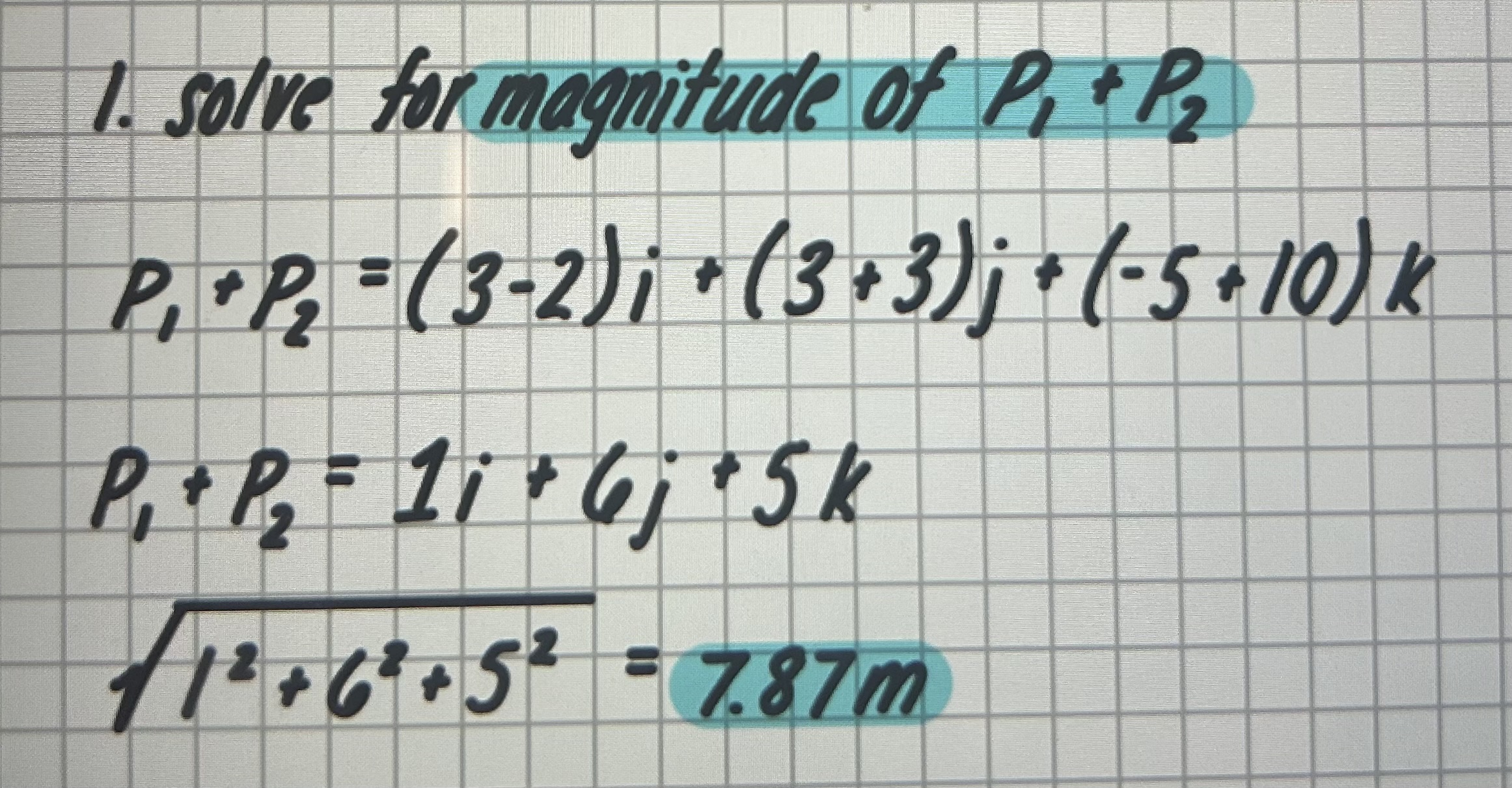
Vector Algebra: solve for angle between P1 and P2
P1 = (3i + 3j - 5k) P2 = (-2i + 3j + 10k)
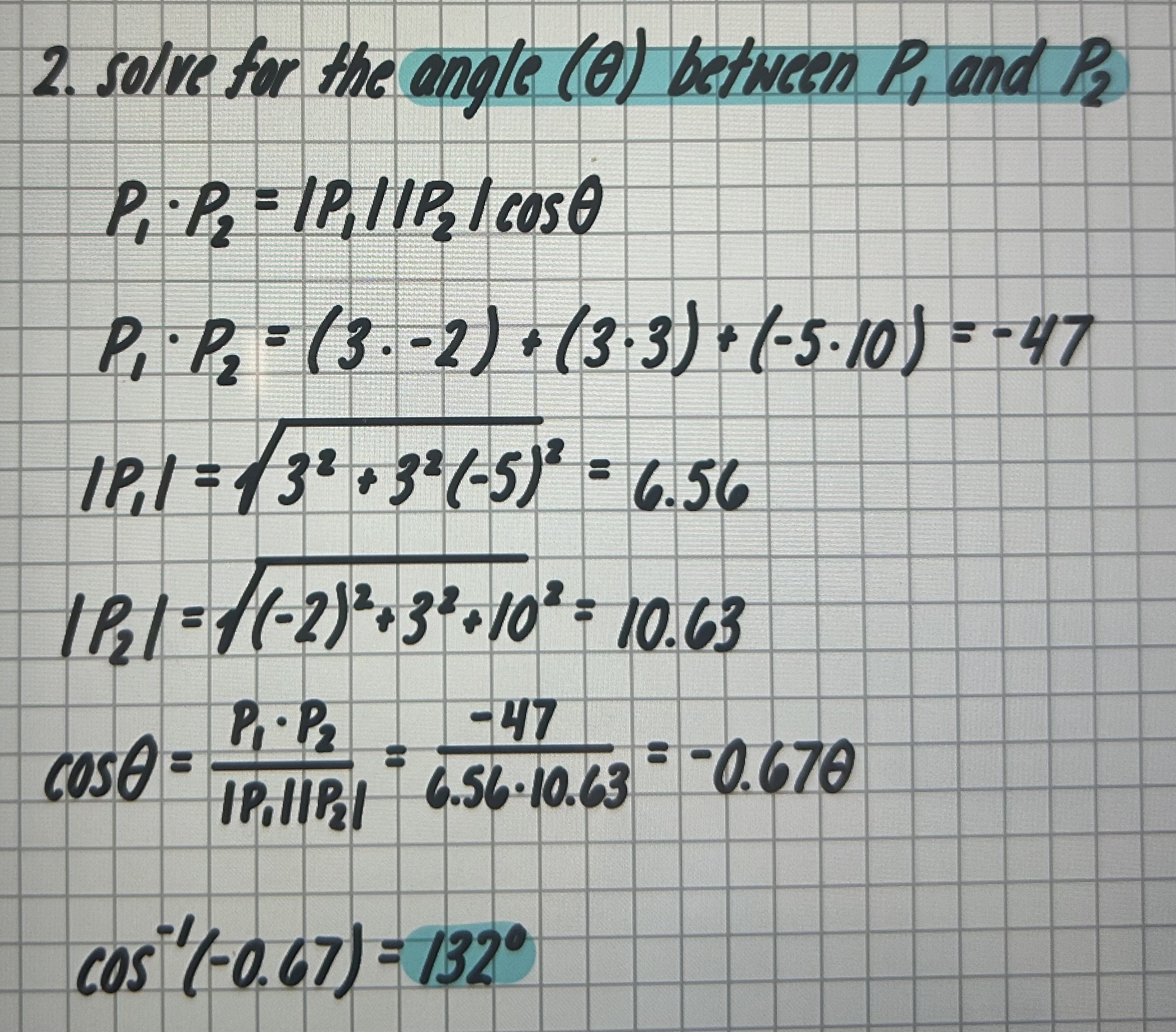
Vector Algebra: what is unit vector (in Cartesian form) associated with P1
P1 = (3i + 3j - 5k) P2 = (-2i + 3j + 10k)

Vector Algebra: what is unit vector that is normal to the plane that contains P1 and P2
P1 = (3i + 3j - 5k) P2 = (-2i + 3j + 10k)
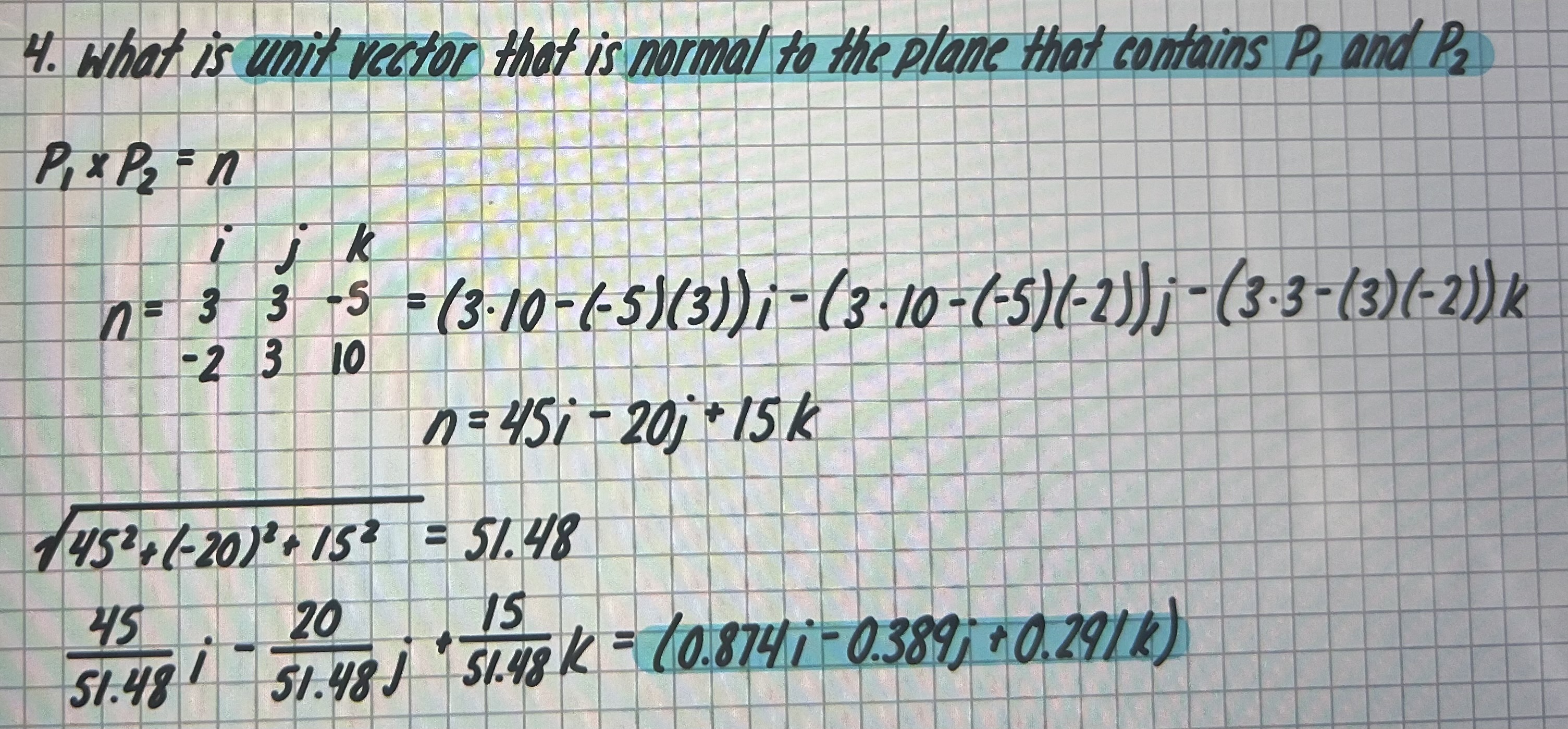
Vector Algebra: what is angle between P1 and positive x-axis
P1 = (3i + 3j - 5k) P2 = (-2i + 3j + 10k)
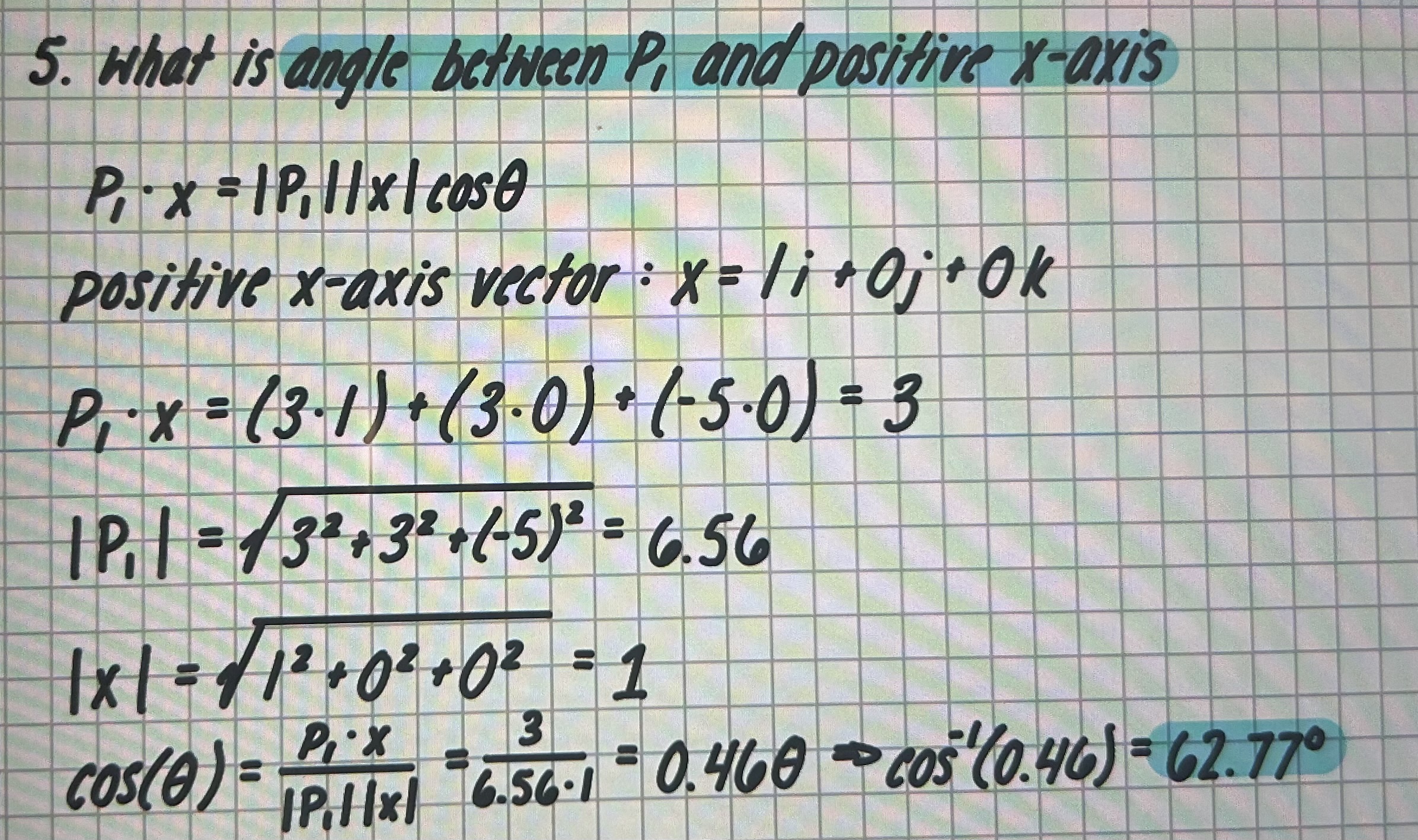
Thick-walled cylinder
circumferential stress (sigma theta,theta) varies in a thick-walled cylinder with radius r
typically given by formula in picture where A and B are constants determined by boundary conditions

average circumferential stress process
integrate sigma theta, theta (r) over radial distance from ri to ro (inner to outer)
divide by length of the interval

Thin-walled cylinder
circumferential stress is assumed to be UNIFORM and can be approximated by formula in picture
p: internal pressure
ri: inner radius
t: wall thickness
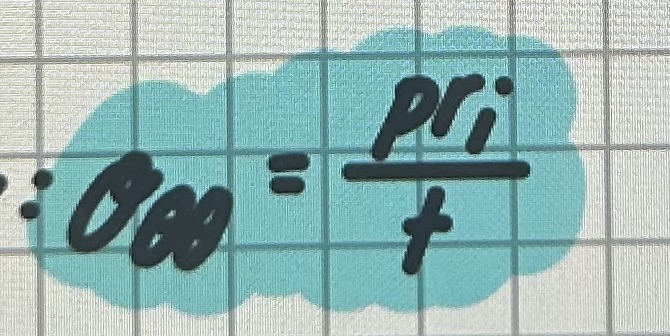
compare thick-walled vs thin-walled averages
to compare need to evaluate the integral for the thick-walled cylinder and see if it matches the thin-walled approximation
practice example for thick vs thin-walled average comparison
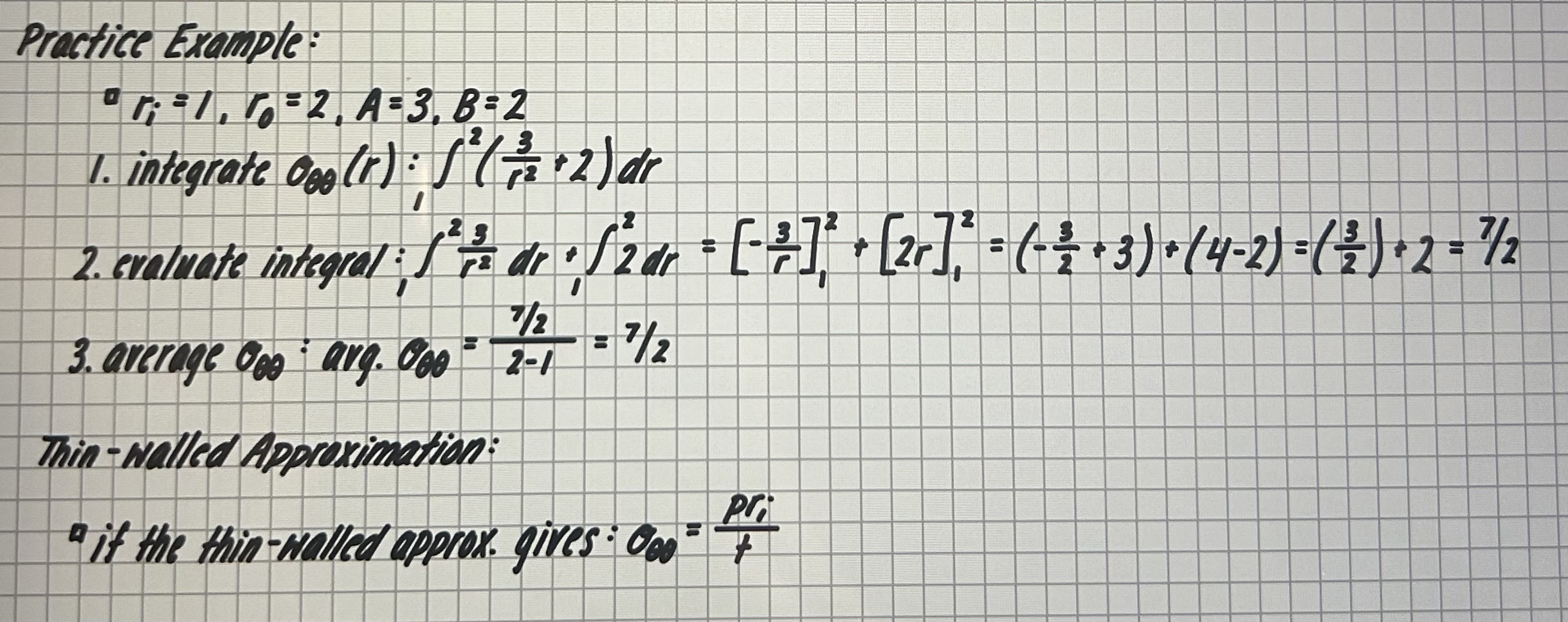
continuum hypothesis
treats ALL properties and variables as continuous smooth mathematical functions
ALL properties and variables are DIFFERENTIABLE
Hooke’s Law
describes relationship between stress and strain in elastic materials
strain in a material is proportional to the applied stress within elastic limit of the material
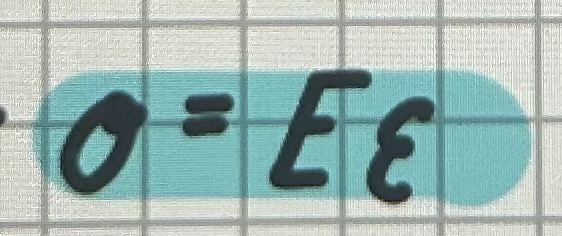
stress
Pa or N/m2
stress is force applied per unit area within materials
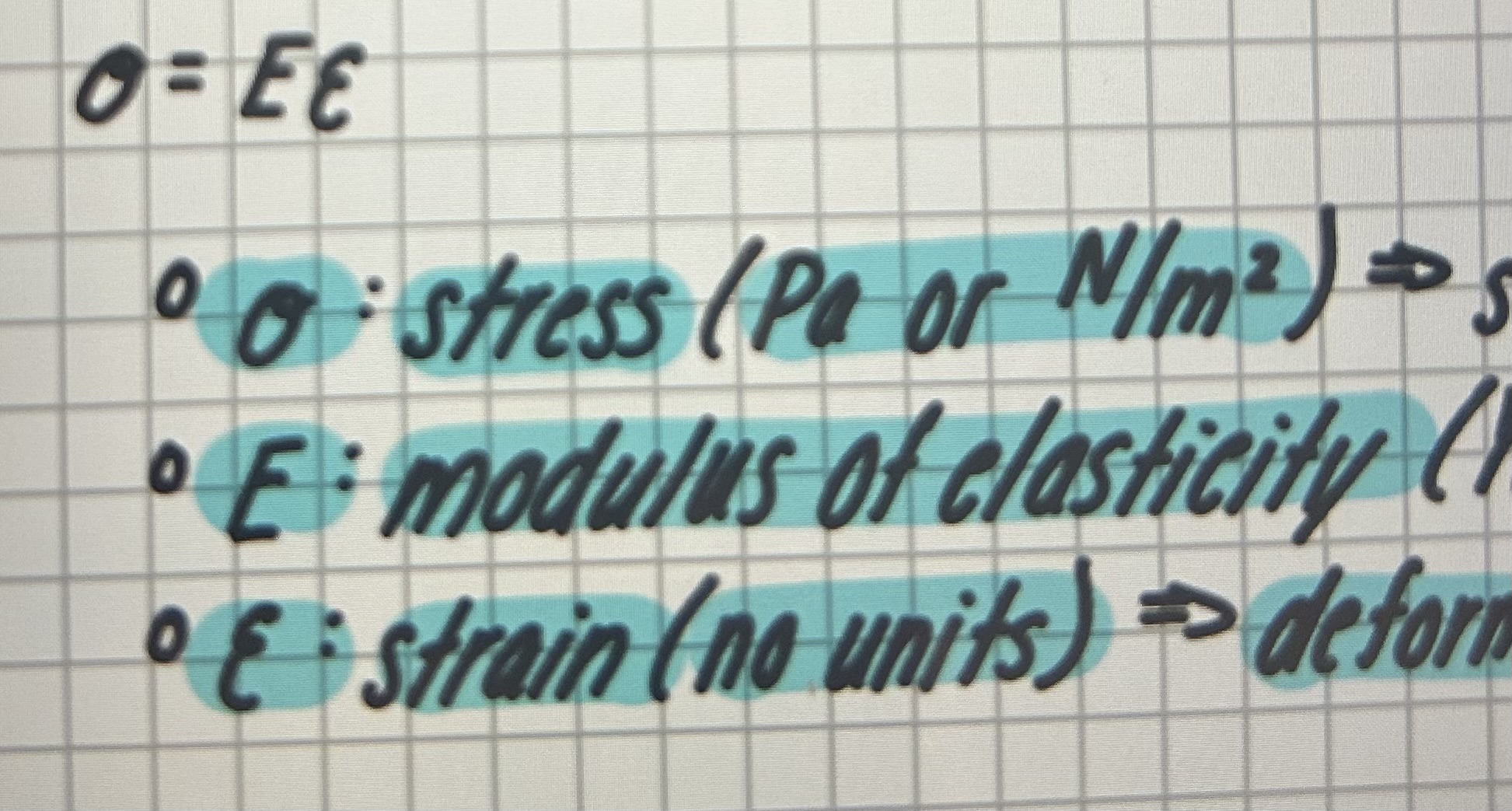
Modulus of Elasticity (E)
Young’s Modulus
Pa
measure of stiffness of a material
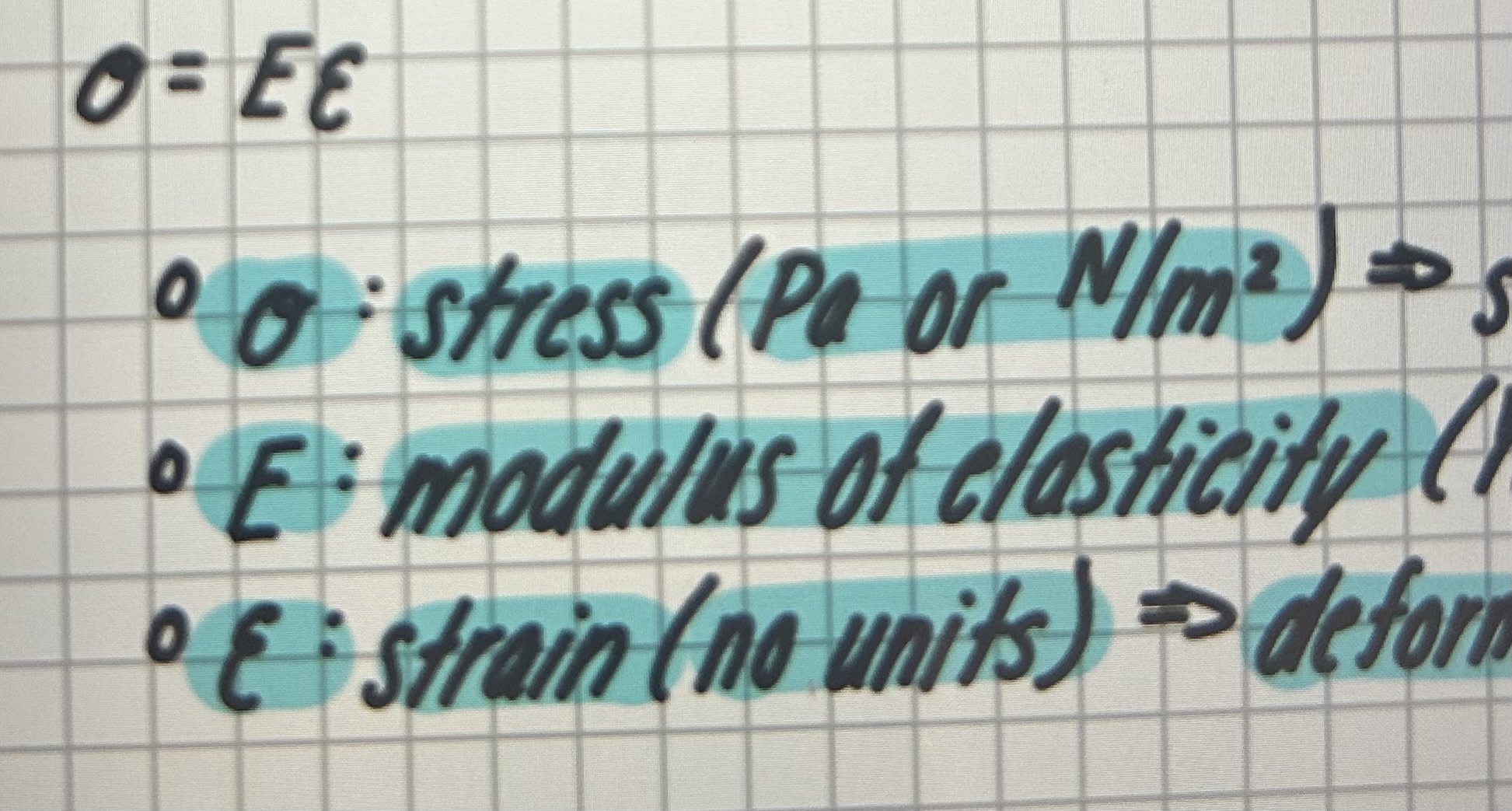
strain
no units
deformation or displacement of material relative to its original length
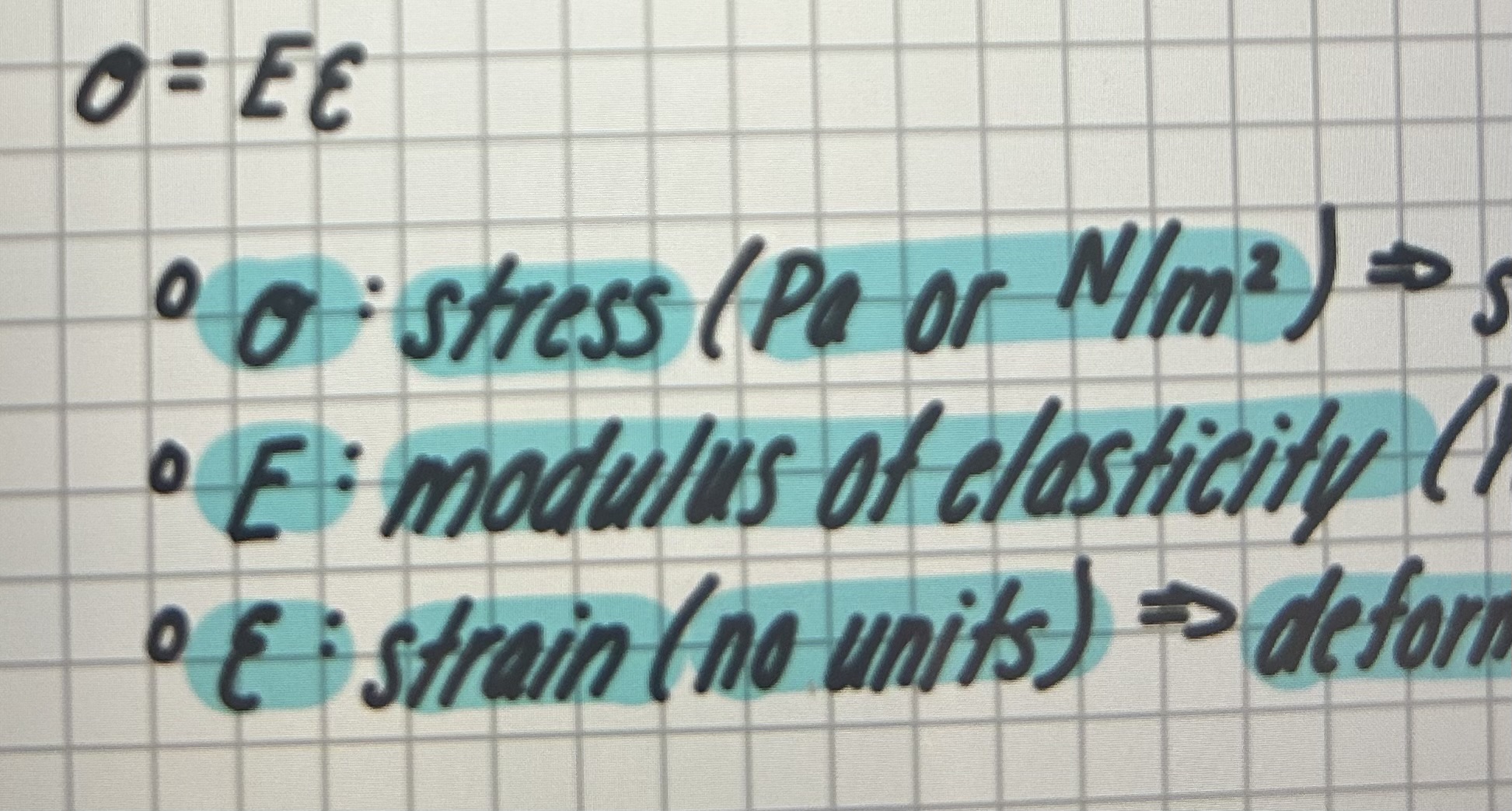
normal/shear stresses
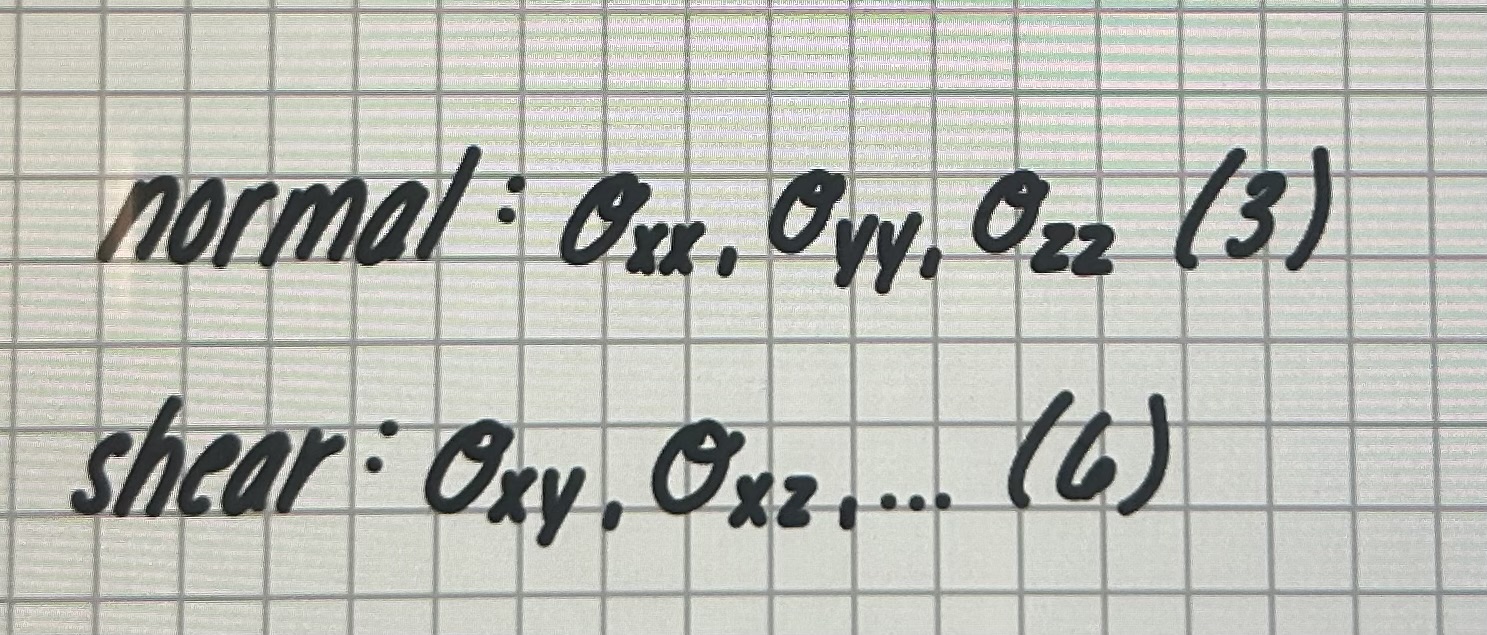
draw a principal stress
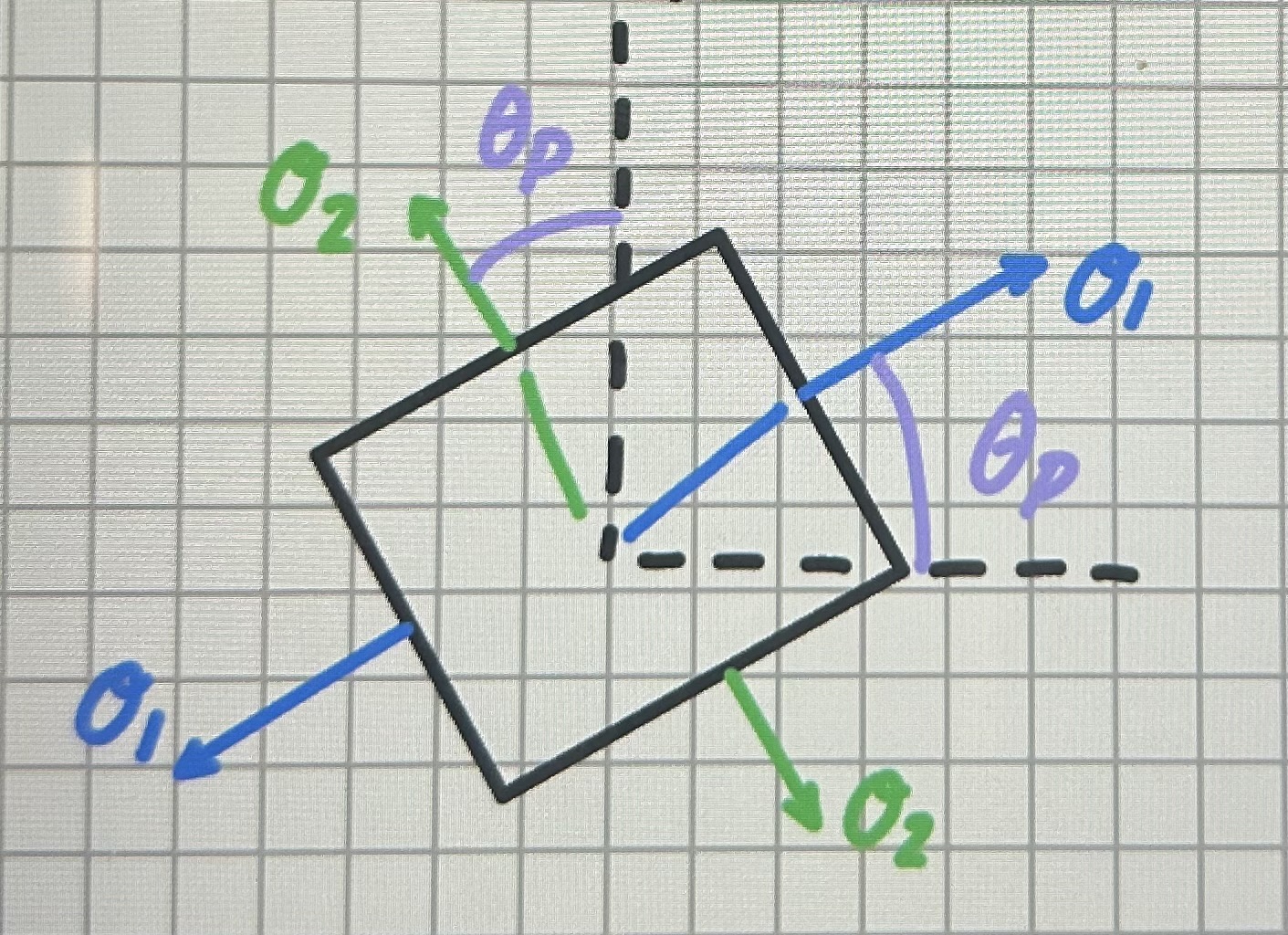
what tensor is a principal stress
2nd order tensor
scalar
normal stresses on principal planes (no shear)
describe 2 reasons why you use Eularian acceleration in fluid mechanics
convective acceleration
local acceleration
convective acceleration
change due to movement through fluid
in steady flow
local acceleration
time-rate of change at a fixed point
unsteady flow
Derivation of Eularian Acceleration
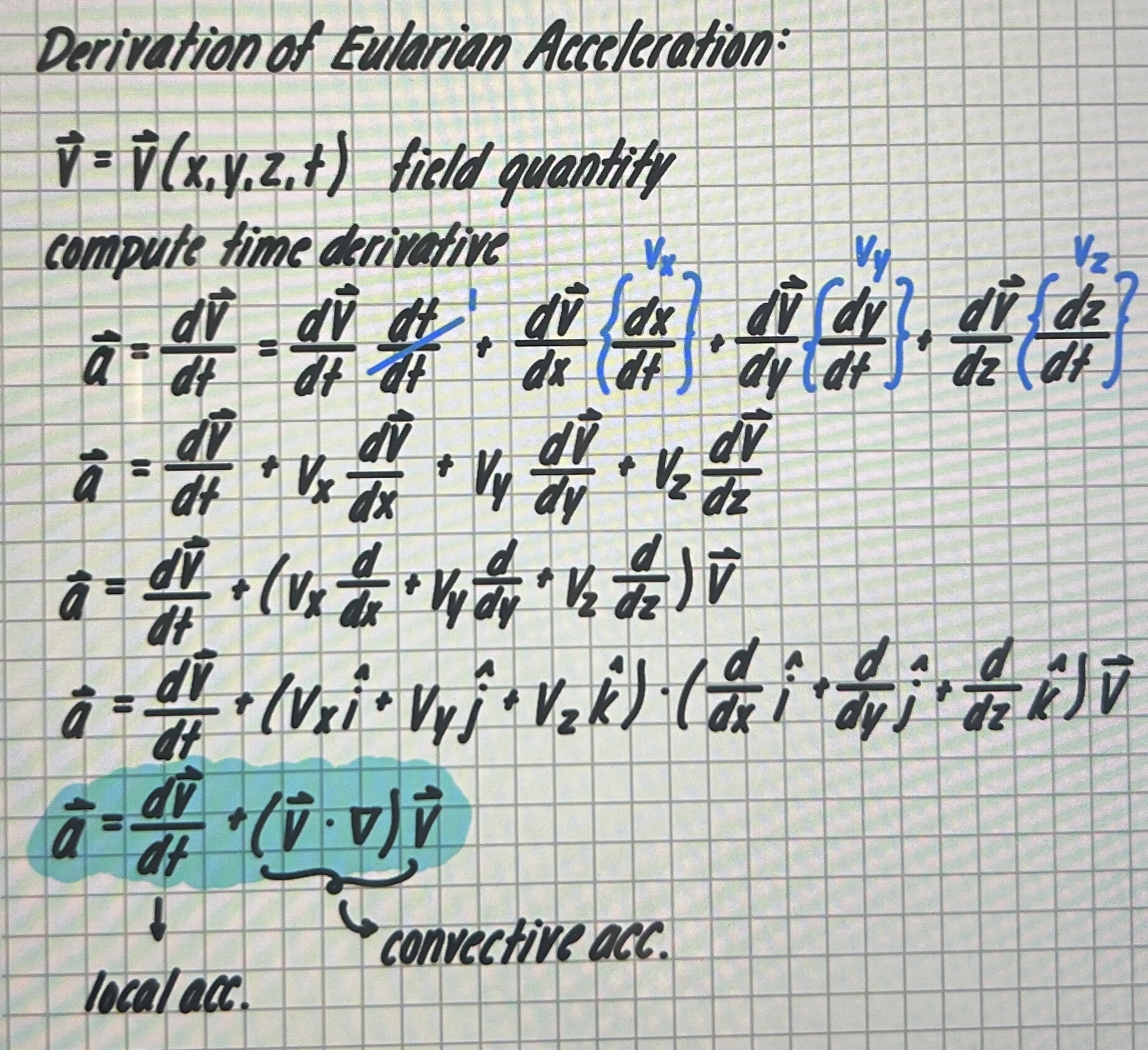
Eularian
focuses on FIXED POINTS in space and observes how MATERIAL FLOWS PAST THEM
ex. watching water pass a buoy
Lagrangian
tracks INDIVIDUAL PARTICLES or MATERIAL POINTS as they move through space and time
ex. watching a swimmer
Derivation for thin-walled cylinder with pressure (closed ends)

For universal solutions, are stresses the same across different materials
No
universal solutions must account for SPECIFIC MECHANICAL PROPERTIES (stress response of materials under load)
constitutive equations
force displacement relationship depending on conditions of interest or stress and strain
FBD for only equilibrium
No
used for both equilibrium/non-equilibrium context problems
Prosthetic Hip Implant
